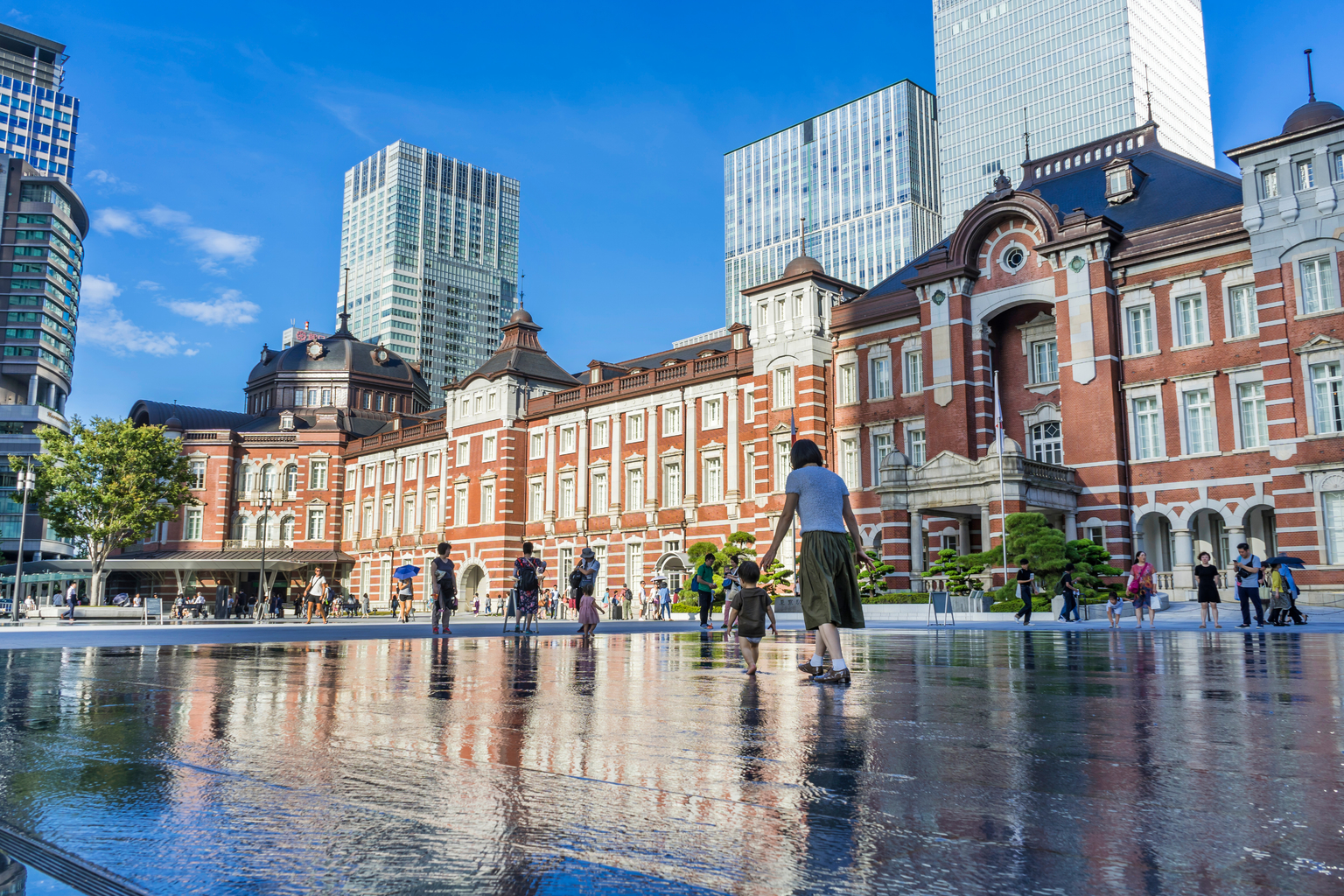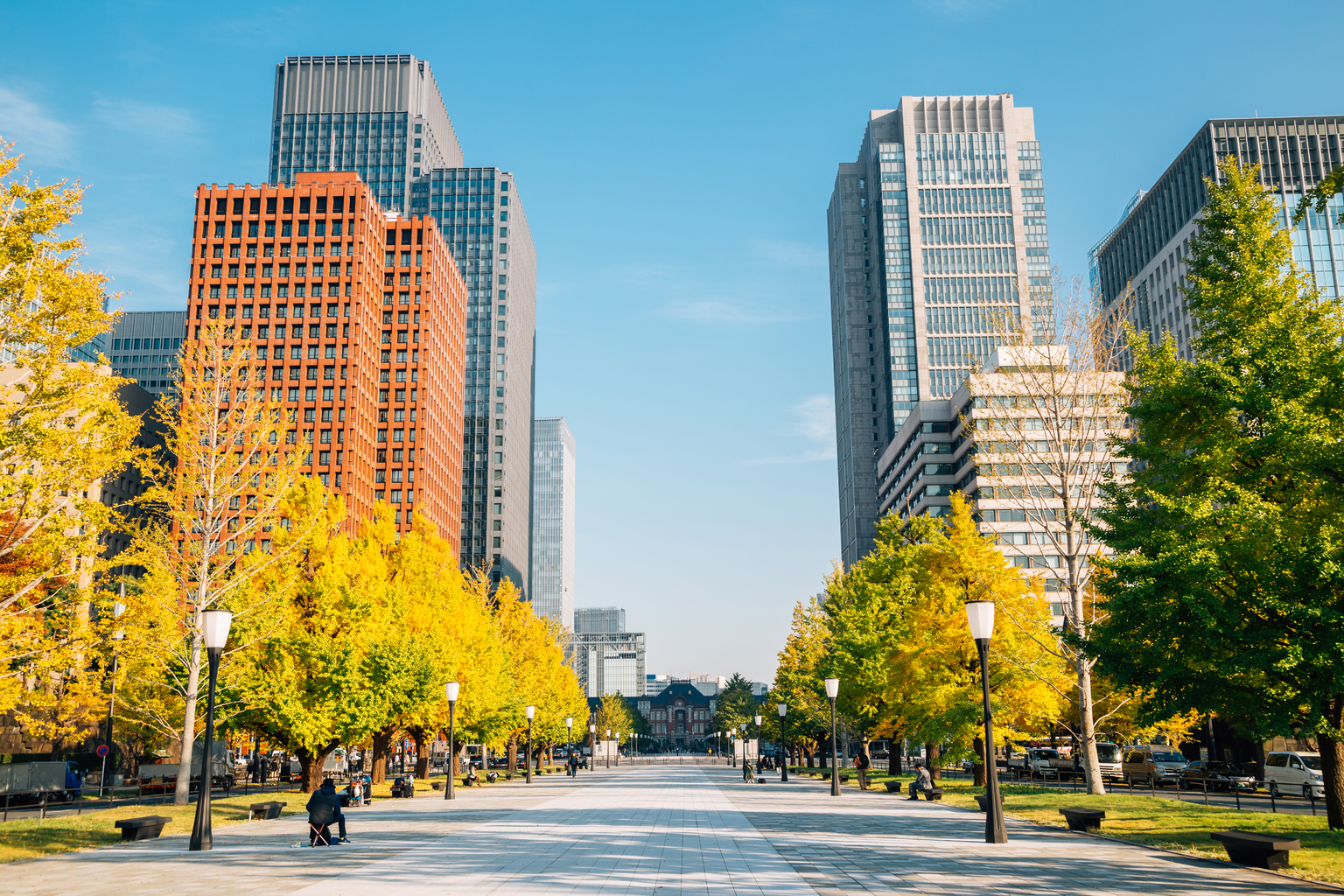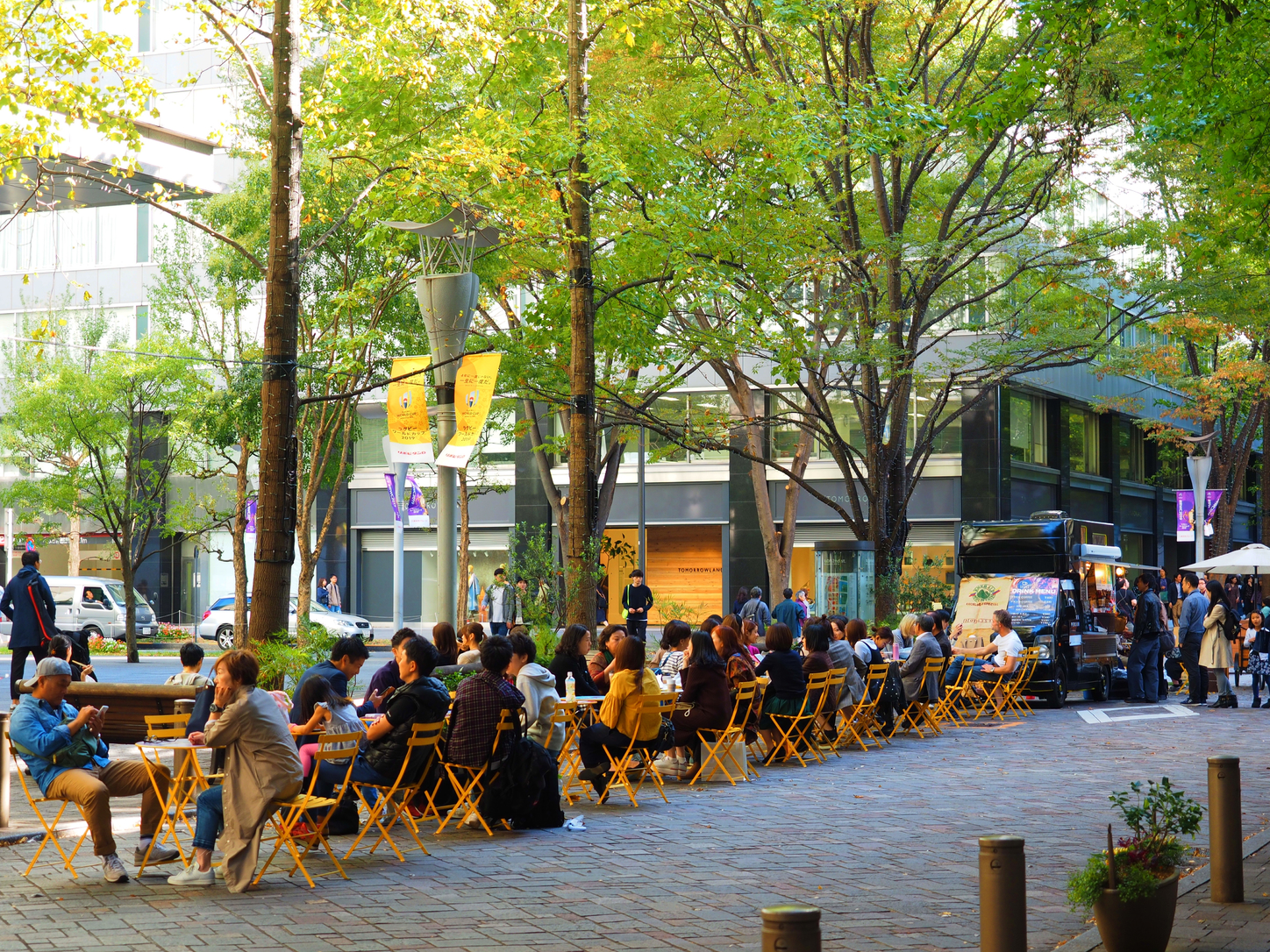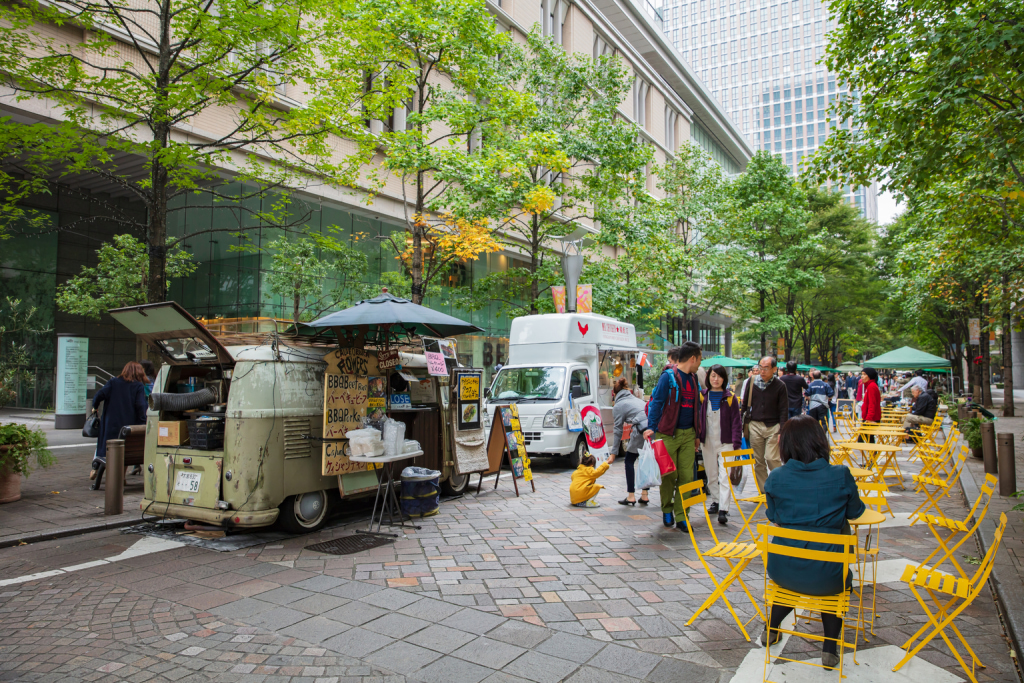Marunouchi is well known as a corporate district sandwiched between Tokyo Station and the Imperial Palace. The tall buildings and trees that line up wide pavements give the business neighborhood an atmosphere distinctive from other parts of the city. For instance, Marunouchi is one of the only areas in Tokyo to offer public benches. Anyone who has visited the urban metropolis may notice the lack of benches on the streets despite being one of the world’s most pedestrian-friendly cities — but Marunouchi is an exception to this standard.
The provision of public benches is only one of the many aspects that distinguish Marunouchi’s city planning from the rest of Tokyo. Efforts from both government and private parties have amounted to the cultivation of Marunouchi as a welcoming people-friendly area.
People-friendly cities should encourage social interaction and participation in different kinds of fun communal activities. Marunouchi’s development has not only focused on building a network of corporations but in developing infrastructure that stimulates human movement and serves a collective purpose.

Water cooling system of Tokyo Station Marunouchi Station square. During the summer, water gushes to lower the temperature of the ground. Photo by Picture Cells via Shutterstock.com
Marunouchi’s Large Public Areas
No pedestrian-centered urban planning is complete without a well-designed public transportation system. Tokyo Station connects a total of 16 Shinkansen, regular train and subway lines that carry around 500,000 passengers daily.
Tokyo Station also acts as a multi-functional gathering space that serves people and encourages interaction. In 2012, the station underwent a renovation to restore the building to its original design and to include the eki-mae square, a large plaza where people gather. You can use the public sitting area, take photos and just hang out.
An extension of the eki-mae square is the Gyoko-dori promenade which stretches all the way to the Imperial Palace and is lined with trees that turn bright yellow during autumn. This renovation project, a collaboration between the Tokyo Metropolitan Government and the East Japan Railway Company, was awarded the Good Design Gold Award in 2018 for its contribution to creating a more people-friendly city.

Marunouchi Gyoko-dori promenade
Marunouchi’s Leisure Opportunities
On weekdays, the sleek-looking skyscrapers that decorate Marunouchi’s skyline invite a swarm of suited office workers. On the weekends, however, the area transforms into an inclusive space where a variety of groups such as families and couples come to partake in leisure activities.
Marunouchi is a popular destination for art excursions, with public art installations on the Naka-dori avenue and a number of museums in the area. One of the most notable art institutions to visit is the Mitsubishi Ichigokan Museum. Its special exhibitions, which are curated two to three times a year, often feature themes ranging from traditional Japanese art to modern Western art.
Marunouchi is also a great place to shop and dine, with many of the office buildings allocating their first floors to high-end fashion brands, cafés and fancy bistros. Many have outdoor seating and terraces too. If visitors want to take a break from the bustle of shopping areas, there are nearby parks such as the Kokyo Gaien National Garden and Hibiya Park. Families and couples often come with picnic mats to share small meals, play catch or take strolls.
Visit Marunouchi early in the morning and you are likely to come across runners and cyclists exercising together. The Gyoko-dori is a practical space for stretching together and the vast expanse of the Kokyo Gaien National Garden provides a beautiful landscape to look at while working out.

Marunouchi Naka-dori. Photo by Oasis2me via Shutterstock.com
Marunouchi Naka-Dori: The Heart of it All
The Naka-Dori avenue is where most of Marunouchi’s liveliness and people-friendly urban design is concentrated. Mitsubishi Corporation, the company responsible for the majority of the area’s development, wanted to create an inclusive area that prioritizes people and community. Their efforts include the addition of benches, the improvement of pedestrian walkways by reducing the street-to-road size ratio and the establishment of the Marunouchi Street Gallery, a series of public art installations by Japanese contemporary artists.
On weekdays from 11am to 3pm and weekends from 11am to 5pm, Naka-dori is closed for traffic to make way for food trucks, chairs and sometimes even buskers. You can enjoy a cup of coffee while watching street musicians, shop through the rows of stalls, or simply wander around the tree-lined street.
There are also seasonal events and this winter it’s the “Marunouchi Street Park 2022 Winter” event held throughout December. Visitors can enjoy food trucks, games and street performances against the backdrop of the twinkling winter illumination lights which will be on until February 2023.









